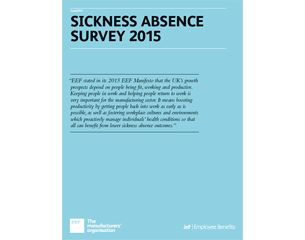
As the 30 October Budget approaches, the usual speculation about reforms to the pensions tax system is rife.
Chancellor Rachel Reeves’ £22bn ‘black hole’ speech and prime minister Kier Starmer’s ‘it’s going to be painful’ warning suggest the government is exploring any opportunity to raise tax revenue, particularly from those with the ‘broadest shoulders’.
In the pensions arena, Reeves might be considering including them within the scope of inheritance tax, tightening limits such as the 25% tax-free lump sum or reintroducing the lifetime allowance. Some would generate more short-term benefit to the Exchequer than others.
But what of the most radical change – moving from marginal to flat-rate tax relief?
Currently, individuals receive tax relief at their highest marginal rate on personal contributions, with pension funds growing virtually tax free and proceeds after the pension commencement lump sum taxed as income when taken.
Employer contributions are generally treated as business expenses and salary sacrifice is popular, due to favourable National Insurance (NI) treatment.
Personal contributions
Under a flat-rate system, the government would set the rate of tax relief, which could change over time.
Assuming a 30% flat rate, basic-rate and non-taxpayers would benefit – but at the expense of higher- and additional-rate taxpayers. It’s also likely flat-rate relief would necessitate a unilateral move to relief at source.
Employer contributions
Flat-rate relief on personal contributions would almost inevitably change the tax treatment of employer contributions.
Without this, higher and additional rate taxpayers could keep current tax relief by asking employers to pay on their behalf through salary sacrifice. Such taxpayers might face a ‘benefit in kind’ tax on employer contributions at a rate equal to their marginal rate minus the flat rate.
If flat-rate relief were 30%, a higher-rate taxpayer might be charged 10% of employer contributions, creating a double whammy on top of less relief on personal contributions.
Making employer pension contributions subject to employer NI would generate significant revenue. However, it would place an additional burden on businesses and act as a disincentive for employers to go beyond the auto-enrolment minimum.
Defined benefit schemes
One of the most complex areas is how ‘open’ defined benefit (DB) schemes, now almost entirely in the public sector, would be affected.
While personal contributions translate well to DB, the treatment of employer contributions is problematic. They can be very generous, vary over time and aren’t ‘earmarked’ for individuals.
A ‘deemed’ employer contribution would need to be calculated based on each scheme’s benefit structure, possibly varying by age to reflect the greater value of each year’s accrual at older ages.
How might the government feel about landing higher-paid professionals, such as in the NHS, with another pensions-related tax bill? But leaving DB schemes unchanged would benefit their higher earning members and would be hugely divisive.
The critical ‘rate’
Many argue the flat rate should be at least 30% to avoid ‘double taxation’ for someone paying higher rate in retirement.
With 25% tax-free and a 40% tax on the balance in payment, the ‘average’ tax rate in payment is 30%. I agree with this as a minimum rate to ensure a positive perception of pension tax efficiency.
However, the calculations oversimplify the issue, as higher-rate tax applies only to total income, including from state and private pensions, above (currently) £50,270.
Individuals would need to look ahead to work out if their pension fund, after tax-free cash, combined with the state pension, would push their income above this threshold.
Advice here would be essential, including considering the benefit of employer contributions.
Individual behavioural response
One big unknown is how individuals will react to any change. Hopefully basic-rate taxpayers would continue to contribute at current ‘net’ levels, increasing gross contributions and boosting retirement outcomes.
However, higher-rate taxpayers might find pensions less attractive, especially if taxed on employer contributions, leading to potential opt-outs. The government would surely want to avoid mass opt-outs, as pension savings benefit individuals, reduce future state reliance and support UK economic growth.
Next steps
While current national finances are stretched, pensions must be viewed as longer term than the timetable for addressing the UK’s financial ‘black hole’, or indeed any government’s five-year term.
Any system of pensions tax relief needs to incentivise appropriate retirement savings, across all earnings bands. Failure to achieve this will fundamentally undermine auto-enrolment and could mean more people falling back on the state in retirement.
Advisers may wish to discuss potential changes with higher- and additional-rate clients. For some, the ‘no regrets’ action might be to pay extra into their pension before 30 October.
Steven Cameron is pensions director at Aegon UK














An uplift of (say) 30% to retirement savings for basic rate tax payers would cost the Exchequer (i.e. everyone else) 10% of those contributions. For nil rate tax payers, it already costs 20%. A 30% flat rate of uplift would cost 30%.
Why people still talk about these uplifts (over and above the 20% granted to basic rate tax payers) as relief I really don’t know. Rachel Reeves isn’t going to increase costs to the Exchequer.
I thought that, overall, the idea is to get the masses = lower paid to put more into pensions – non?
Any rate enhancement would assist… most higher earners have enough to do without micro managing their pensions – especially DB as they have no control over any part of it.
DB allows market forces to enable employers to adjust (polite) their contributions… however these are (to be) treated, the end reward is a very good one assuming solvency is there.
The twist and turns of employers and their DB schemes(ing) is a wonder – the old Isoceles group was refloated on no contribution for years – cash flow recycled – but then the Co. Sec. was also the pensioneer trustee… and the consulting actuaries always bagged their fees…
Another recycles their own leases rented by errm themselves into the DB pension as part contribution…
a large German travel co. even recycled a famous British brand to close a very large fund deficit…
Risk concentration… LoL.. apparently not!
There is far too much of everything as far as pensions are concerned… Dark Lords’ involvement, a huge and bloated fee greedy provider block, confused advisers, confused clients, most all too much yap…
If you want real security which matches the tax free/flexibility of pensions, try odds spreads with Roulette, (French only), this is, if played properly, quite predictable… saves on heating too!!